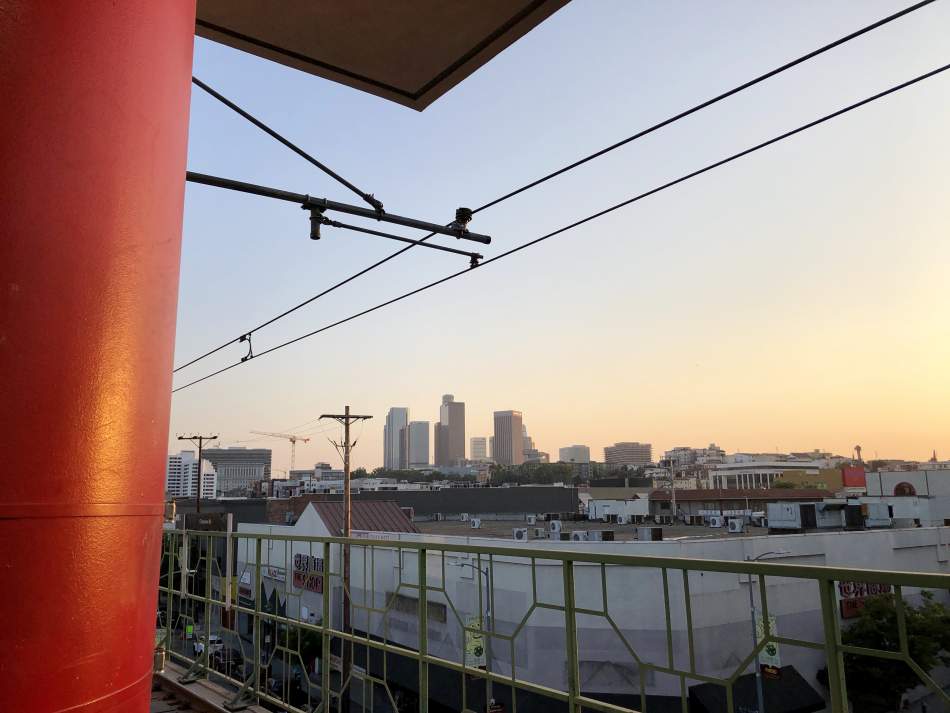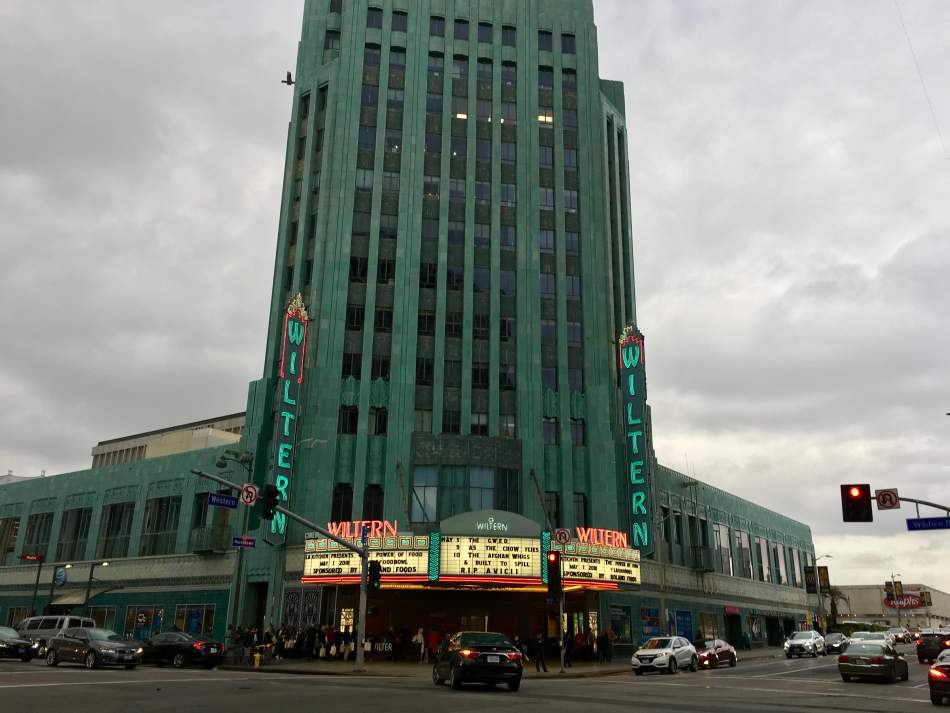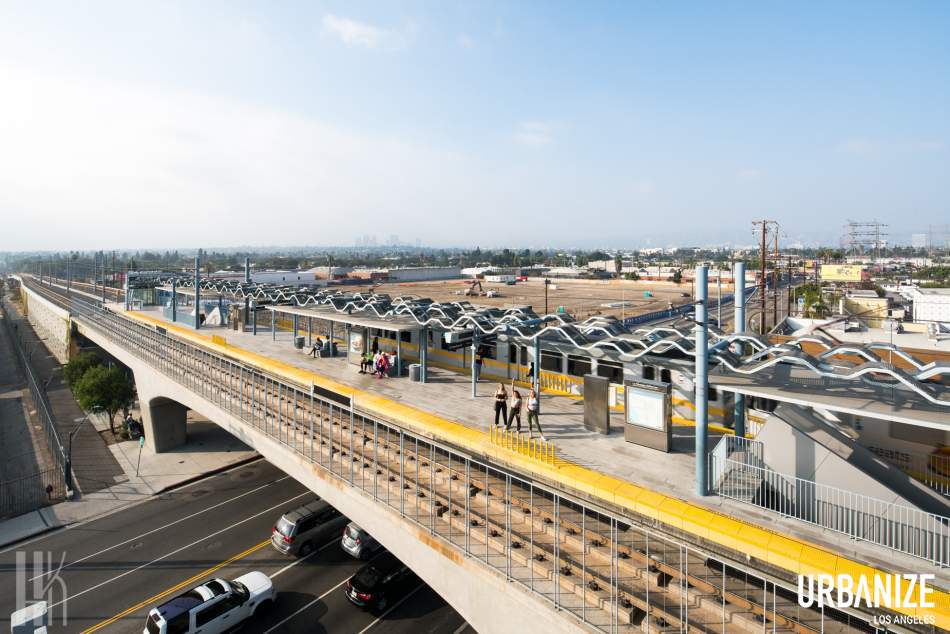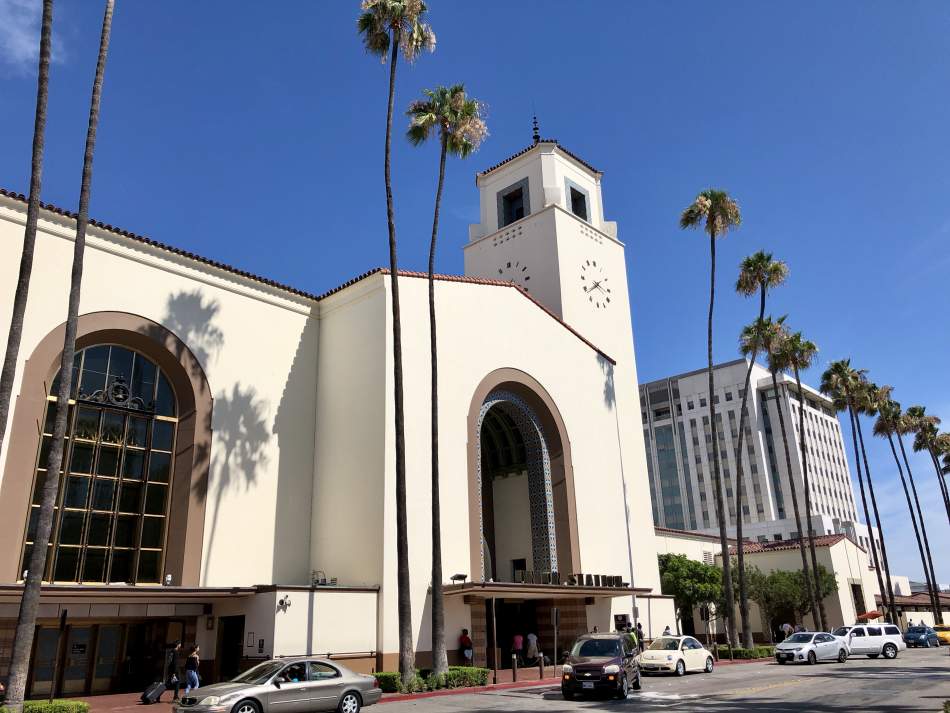“Either you bring the water to LA or you bring LA to the water.” The classic movie Chinatown tells the story of a crucial period in the city’s development: when the construction of a great aqueduct allowed Los Angeles to grow dramatically from its humble origins. The plan, as this line from the film describes, was to concentrate the city’s future growth in the San Fernando Valley, where few people lived at the time but where that water source was most accessible. Today, a new giant of civic infrastructure is in the works, and once more LA is being moved closer to it.
Most readers of this site know that Los Angeles doesn’t have enough housing supply for its burgeoning population and economy, and also that LA is in the midst of its greatest transit building boom in decades. Yet concerns over increases in traffic lead many to oppose new development around the city; and the value of these transit investments is diminished if few people live close enough to the stops to use them. What to do? The City of LA found a way to ‘kill two birds with one stone’ by creating its Transit Oriented Communities Affordable Housing Incentives Program, frequently referred to by its acronym “TOC”.
The TOC program (which became effective on September 22, 2017) was implemented by the Director of Planning as mandated by the voters’ approval of Measure JJJ in the Fall of 2016. The objective of the TOC program is twofold: to encourage the development of more affordable housing, and to cluster more of the City’s future growth in the vicinity of transit stations, making these investments worthwhile by providing the new trains with their riders.
Looking back on the program after one year, one can clearly see that it has made a positive impact in terms of producing additional transit-oriented development and more affordable housing units. Based on filings as of June 30, 2018, the City has received applications for 112 TOC projects, which would yield 5,571 residential units, of which 1,145 are reserved as affordable. There have been an additional 83 Tier Verification Requests, the first step before a project makes its formal TOC request, as of a June 8, 2018 memo by the Department of City Planning.
The Background of TOC
Despite the slight overshadowing of the Presidential race, Election Day on November 8, 2016 yielded significant policy results in the City of Los Angeles. LA Voters passed Measure M, which provided funding for expansive transit development in the county. They also voted in favor of Measure JJJ, known as the “Build Better LA Initiative”, a measure promoted largely by labor groups to require higher wage levels for certain development projects. Broadly speaking, this Measure has added fees and requirements that make many projects that require zone changes and/or general plan amendments unfeasible. From 2016 to 2017, units requested using a zone change or general plan amendment dropped by 78%, according to the Department of City Planning’s July 2018 Housing Progress Report.
However, Measure JJJ contained a lesser known provision which has also had meaningful impacts. It included language calling upon the Department of City Planning to create a program for increasing density in the vicinity of current and future transit stops – articulated in LA Municipal Code Section 12.22.A.31. This program, as it was developed over the subsequent year, became the Transit Oriented Communities (TOC) Affordable Housing Incentive Program, which requires developers to dedicate a portion of residential units as affordable (it is usually about 10% reserved for “Extremely Low Income” households) in exchange for higher permitted density, lower parking requirements, and other incentives. Measure JJJ made pursuing zone changes prohibitively expensive for most prospective projects, such that TOC has become one of the only effective means to pursue higher density in the City.
Craig Lawson & Co., LLC (CLC) is a full-service land use consulting firm. We perform zoning research, provide advisory services, and represent developers through the City’s entitlement process. We have worked on hundreds of projects across Southern California, including Metropolis fronting the Harbor Freeway, One Santa Fe in the Arts District, the Circa towers at 12th and Figueroa, and many other large-scale development projects. We have also overseen the entitlements of numerous affordable housing projects, including dozens of projects that are 100% affordable. Over the past year, however, many of the projects we’ve been working on, both for-profit and non-profit, have involved TOC.
The Promise of TOC
Since TOC was implemented, it has attracted the attention of many developers who have come through our doors. We have had developers reach out to us saying that they haven’t built in the City of LA in years, but are now considering doing so in direct response to the bonuses offered by TOC – especially its higher density allowances and lower parking requirements, as well as its more expeditious approval process. The TOC Guidelines packet is now one of the most frequently referenced documents on our desks.
When we assess and advise on potential multi-family residential projects, we typically review TOC incentives as well as other development incentive programs, such as Density Bonus. Often, it's clear that TOC will provide the best opportunities for additional density, more height, and other incentives that can make a project feasible.
Our office recently secured approval for a TOC project at 900 S. Vermont Avenue, in what may have been the first approved TOC project that is not 100% affordable. The review process was streamlined and straightforward, in a manner illustrative of the promise of this program. The project, which is located in Koreatown, calls for the construction of a six-story building featuring 193 residential units – 20 of which would be designated as Extremely Low Income Restricted Affordable Dwelling Units, located above approximately 20,656 square feet of commercial space on the ground level. The following table illustrates the impact of TOC on what could be developed on this site:
The TOC program has allowed for an appreciably larger project than would have been possible under base conditions, or even using the pre-existing Density Bonus law. Critically, the entire approval process was accomplished much more quickly than would be typical. As this project’s manager at CLC Max Sherman puts it, “TOC increased 900 Vermont’s allowable dwelling units by 70%. That’s a huge number. That means 70% more housing for families, professionals or students that was approved by the City in less than 6 months.”
Improving TOC
Thus far, the TOC approval process is relatively streamlined as compared to other City requests. Still, there are certain ways in which we think the City can make it easier for developers to deliver affordable housing units via this program.
Mostly, this involves the release of some program qualification information. It is our understanding that the City maintains an internal list of TOC-qualifying bus routes. Yet this list is not public, so developers who would like to utilize this program need to laboriously check qualifications for these routes on their own. The same goes for qualifying Major Transit Stops. And they cannot be confident of these designations until they submit a formal Tier Verification request to the city – paying roughly $500, making two in-person trips to City offices, and waiting over a month for the City to release an answer which would be almost self-evident if the City published the documents it references in this review. Releasing these qualification materials would be the textbook definition of cutting red tape, making it much easier to find affordable housing opportunities.
The City could also clarify and possibly expand certain program qualification criteria related to bus routes. For Major Transit Stops qualified by bus stops, the TOC Guidelines define the intersection of two bus lines “as the midpoint of the street intersection where two or more eligible bus routes meet or cross, and passengers have the direct ability to transfer on foot.” Yet buses do not always stop right at the intersection, making determination for those stops unclear. And in some places with irregular street grids or narrow blocks, a bus stop which is one block away from another may be as direct of a transfer as two busses stopping on the same intersection. Perhaps the City could set a defined radius distance between two stops which would qualify them as an “intersection”, rather than the current incompletely-defined phrasing.
Safeguarding TOC
Thus far, the TOC program has been a promising force for higher density, transit-oriented, and affordable housing development in Los Angeles. Projects have been progressing through their entitlement process and, as of the time of publication, the City has yet to defend against a major legal challenge to the program. There are storm clouds on the horizon, however.
Over time, as more people learn about the extent of this program, there is bound to be greater opposition to its implementation. This may manifest itself in the form of lawsuits, legislative changes, appeals, or public opposition to transit expansion (for the purpose of limiting TOC areas). The City Council has been floating the idea of requiring specific public notices for TOC projects.
Other public agencies may act to curtail the program as well. For example, on June 27, 2018 the CRA/LA (successor agency to the Community Redevelopment Agency) issued a memo stating that TOC bonuses do not allow projects to supersede CRA Redevelopment Plan density limits, which are often lower than what TOC would allow. This memo states that CRA restrictions apply within the areas of the following Redevelopment Projects: City Center, Central Industrial, Hollywood, North Hollywood, Wilshire Center/Koreatown, and Pacific Corridor. The City has yet to work out an arrangement with the CRA/LA on this matter.
Moving forward, the City’s best option may be to safeguard the TOC program through its Community Plan Update process. The City Planning Department aims to update all Community Plans by 2024. These plans can include provisions that adopt and supersede TOC provisions, as was employed (to a certain extent) in the Exposition Corridor Transit Neighborhood Plan. Securing these sorts of provisions across the City will embed the ideals of the TOC program into the fabric of the City’s growth and development over decades to come. Utilizing the Community Plan Update process to secure these provisions will tailor this expansive program to the particularities of LA’s expansive array of neighborhoods.
Conclusion
Over the coming years, the premise of the TOC program is likely to be the guiding spirit of how new development is done in Los Angeles. Auto-oriented sprawl was the default form of growth during much of the twentieth century, but that mode of development has run up against structural limits in the twenty-first. Today’s default growth form is more likely to be denser, transit-oriented clusters, with those parts of the City lacking transit access seeing much less new construction. The TOC program is key to molding the expansion of the City in such a manner. This is especially valid when considered together with the other effects of Measure JJJ, which have greatly limited higher density zone changes elsewhere in the city. And in an era where housing is of the greatest scarcity, the affordable and market-rate units provided via this program are critical to maintaining a prosperous Los Angeles.
Craig Lawson is President of Craig Lawson & Co., LLC, which he founded in 1999. Over the last 18 years, Craig Lawson & Co., LLC has grown to be the largest independent land use consulting firm in Los Angeles. The firm, with 14 employees, has carried out zoning research, land use analysis, and entitlement processing for hundreds of complex residential, commercial, industrial and institutional projects, including the Metropolis mega-project in downtown Los Angeles, the Emerson College Los Angeles campus in Hollywood, the Vermont/Wilshire high rise project in Koreatown, and Il Villagio Toscano in the San Fernando Valley. Craig is on the Advisory and Management Committees of the Urban Land Institute, Los Angeles Chapter, and serves as an expert witness and frequent speaker on zoning and land use issues.
Jason Lopata works as a land use consultant with Craig Lawson & Co., LLC, helping real estate development projects in LA navigate the city approvals process. Jason previously spent time on the Business Team of LA Mayor Eric Garcetti. He also writes articles on globalization and urban development for Stratfor, the geopolitical analysis website. Jason received his bachelor’s degree from Stanford University and completed programs of study at the University of Oxford and at UCLA’s Anderson School of Management. While at Stanford, he founded and led the student real estate organization, and authored his senior thesis on Los Angeles development over the past 30 years.











